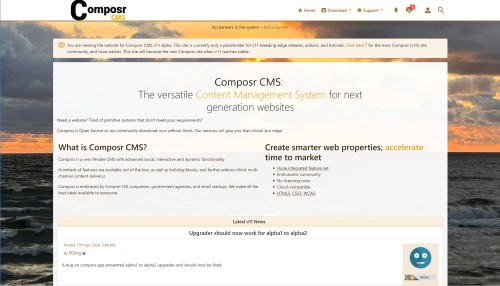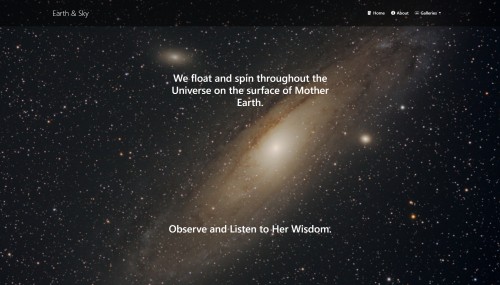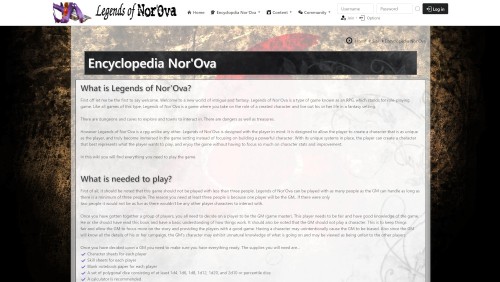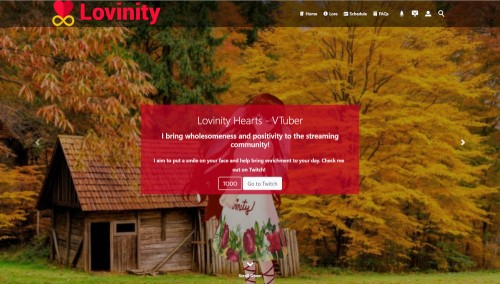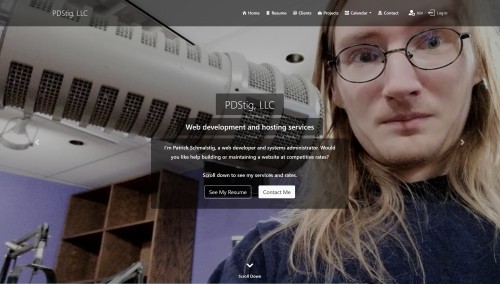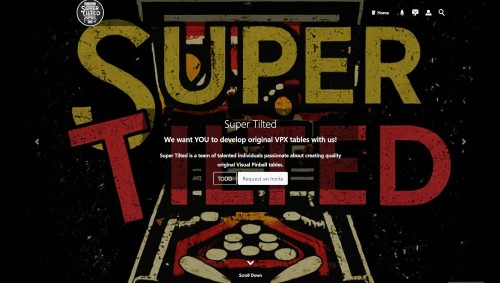Featured Sites: A-Z Index
H
Newest 10 Entries
| Title | Featured Content |
|---|---|
| Icon | 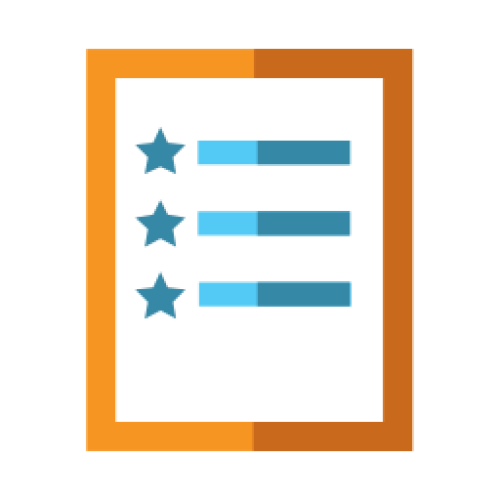 |
| Description | Random quotes: Put random quotes (e.g. testimonials) into your design. Awards: Showcase your most popular content, and optionally award the submitter with points. Tags: Set keyword tags for content and display tag clouds. Recent content: Automatically feature links to your most recent content (via main_multi_content block). Show website statistics to your visitors (via stats graphs or page hit counters). Random content: Feature random content from your website specified via a sophisticated filtering language. |
| Title | Newsletters |
|---|---|
| Icon |  |
| Description | Automatically create newsletter issues highlighting your latest content Double opt-in: Prevent false sign-ups by asking subscribers to confirm their subscriptions. Host multiple newsletters: Visitors can subscribe to the ones they want. Flexible mailings: Send out mailings to all members, to different usergroups, or to subscribers of specific newsletters. Welcome e-mails: Send multiple welcome e-mails to new users automatically, on a configurable schedule (Conversr-only). Bounce cleanup: Automatically clean out bounces from your e-mail list. Unsubscribe: Recipients can easily unsubscribe from newsletters through an unsubscribe link provided in the e-mail. Change settings: Newsletter subscribers can change their subscription settings on-site. Drip sending: Prevent overwhelming your mail server or outbound limits. |
| Title | Searching |
|---|---|
| Icon |  |
| Description | Choose what is searchable Boolean and full-text modes Keyword highlighting in results Search boxes to integrate into your website Logging/stats OpenSearch support: Allow users to search from inside their web browser. Results sorting, and filtering by author and date Search within downloads: Including support for looking inside archives. Composr fast custom index: Support full-text searches in instances where your database does not |
| Title | Banners |
|---|---|
| Icon |  |
| Description | Multiple types: Each one can specify its own width-by-height (e.g. skyscraper). Smart banners: Integrate text-banners into your content via keyword detection. Broad media compatibility: Image banners, external banner rotations, and text banners. Determine which banners display most often Run a cross-site banner network Hit-balancing support: A site on a banner network gets as many inbound hits as it provides outbound clicks. Targeted advertising: Show different banners to different usergroups. Track banner performance Use the banner system to display whole sets of sponsor logos or partners Supports Geotargeting Periodic content reviews: Reminders to check (or remove) banners |
| Title | Installation |
|---|---|
| Icon |  |
| Description | Quick installer: Our self-extractor allows faster uploads and will automatically set permissions. Wizard-based installation Auto-scans for compatibility problems: Be informed of problems before installing Get your site up and running in just a few minutes Keep your site closed to regular visitors until you're happy to open it Configures server: Automatically generates an htaccess file for you (for Apache). Auto-detection of forum settings for easy integration Install test content |
| Title | Web Pages |
|---|---|
| Icon |  |
| Description | Add virtually unlimited pages to your site WYSIWYG editor (powered by CKEditor) Convenient edit links: Staff see “edit this” links at the bottom of every page. PHP support: Upload your PHP scripts and run them inside Composr (may require adjustments to the script code). Hierarchical page structure: Supports parent and child pages Periodic content reviews: Helping you ensure ongoing accuracy of your content. Add Comcode pages (the default) or static HTML pages Supports revisions and revision control systems (such as git); add new pages as files, and Composr will automatically register them in its system. |
| Title | Downloads |
|---|---|
| Icon |  |
| Description | Clear organisation: Uses a tree structure for unlimited categorisation. Anti-leech protection: download links contain a session ID Community-centred: Allow users to comment upon and rate downloads Many ways to add new files: Upload files. Link-to existing files. Copy existing files using a live URL. Batch import links from existing file stores. Author support: Assign your downloads to authors, so users can find other downloads by the same author. Set licences: Make users agree to a licence before downloading. Images: Show images along with your downloads (e.g. screen-shots) (this implicitly uses galleries). Basic file versioning support Control monthly bandwidth use site-wide |
| Title | Wiki+ |
|---|---|
| Icon |  |
| Description | Think “structured wikis”. Create an encyclopaedic database for your website Use a tree-structure or traditional cross-linking Supports revisions: Track changes Display the tree structure of your entire Wiki+ Allow users to jump in at random pages Make your pages either wiki-style or topic-style Allow members to contribute to Wiki+ pages by adding Wiki+ posts |
| Title | Quizzes and Surveys |
|---|---|
| Icon |  |
| Description | Run a competition: Choose winners randomly from those who passed the quiz. Surveys: Gather data and find trends. Tests: Test members' knowledge on a variety of topics. Cheat prevention: Settings to prevent cheating, such as time limits, question / answer shuffling, and re-testing rules. Integration with points: Charge points to enter a competition, or award points for winning. |
| Title | News and Blogs |
|---|---|
| Icon |  |
| Description | Member blogs: Allow members to have their own blogs on their profile RSS and Atom support: Export and import feeds. Trackback support: Send and receive trackbacks. Scheduled publishing Ping support and RSS Cloud support Multiple news categories and filtering Multiple ways to integrate news into your website Import from RSS feeds Supports geotargeting Members can rate and comment on news articles and blog posts Send out a news article as a newsletter |
Top 10 Entries
| Question | What are the key classes and utilities provided by Composr Mobile SDK? |
|---|---|
| Answer | CMS SDK provides several classes with utility functions mirroring PHP and Composr APIs, including:
|
| Question | How do I set up Composr Mobile SDK in my iOS and Android projects? |
|---|---|
| Answer | iOS (Xcode):
Android (Eclipse):
|
| Question | What are some key concepts related to mobile app development with Composr? |
|---|---|
| Answer | Essential concepts include:
|
| Question | What other approaches exist for mobile integration with Composr? |
|---|---|
| Answer | Other approaches, in various stages of development, include:
|
| Question | What are some of the default endpoints available in the server-side API? |
|---|---|
| Answer | Default endpoints cover various functionalities, including:
Specific details on parameters and response data for each endpoint can be found in the documentation. |
| Question | How does authentication work with the server-side API? |
|---|---|
| Answer | Authentication is handled automatically using cookies, similar to regular website requests. If cookies are not feasible, the response parameters device_auth_member_id_cn/device_auth_pass_hashed_cn/device_auth_member_id_vl/device_auth_pass_hashed_vl from the login endpoint can be resent as POST parameters in subsequent requests. |
| Question | How do I access the server-side API for my mobile app? |
|---|---|
| Answer | The server-side API can be accessed via HTTP calls to http://yourbaseurl/data/endpoint.php. Results are returned in JSON format. The API utilizes endpoints with a 'hook' name and a 'hook type' categorization. Both REST-style and GET-parameter style requests are supported, with the latter recommended for simplicity. |
| Question | What is the purpose of the Composr Mobile SDK Toolkit? |
|---|---|
| Answer | The Toolkit, part of the composr_mobile_sdk addon, aids in mirroring Composr website resources into a mobile app. It includes tools for generating iOS/Android string resources from language files and exporting theme images in a directory structure suitable for iOS/Android app image assets. |
| Question | How can I obtain Composr Mobile SDK? |
|---|---|
| Answer | The iOS/Android SDK can be found on GitLab at: Composr ecosystem / Composr Mobile SDK · GitLab. To connect to a Composr site, you will need to install the composr_mobile_sdk addon, which is not bundled. This addon provides scripting to generate app assets from the Composr site. |
| Question | What is Composr Mobile SDK? |
|---|---|
| Answer | Composr Mobile SDK (CMS SDK) is a toolkit designed for experienced iOS and Android developers to build mobile apps that integrate with a Composr-powered website. It offers both Composr-specific integrations and a collection of standalone utilities for building apps, providing a common base between iOS and Android akin to the PHP and Composr APIs, enabling easier code porting while maintaining a native experience. |



